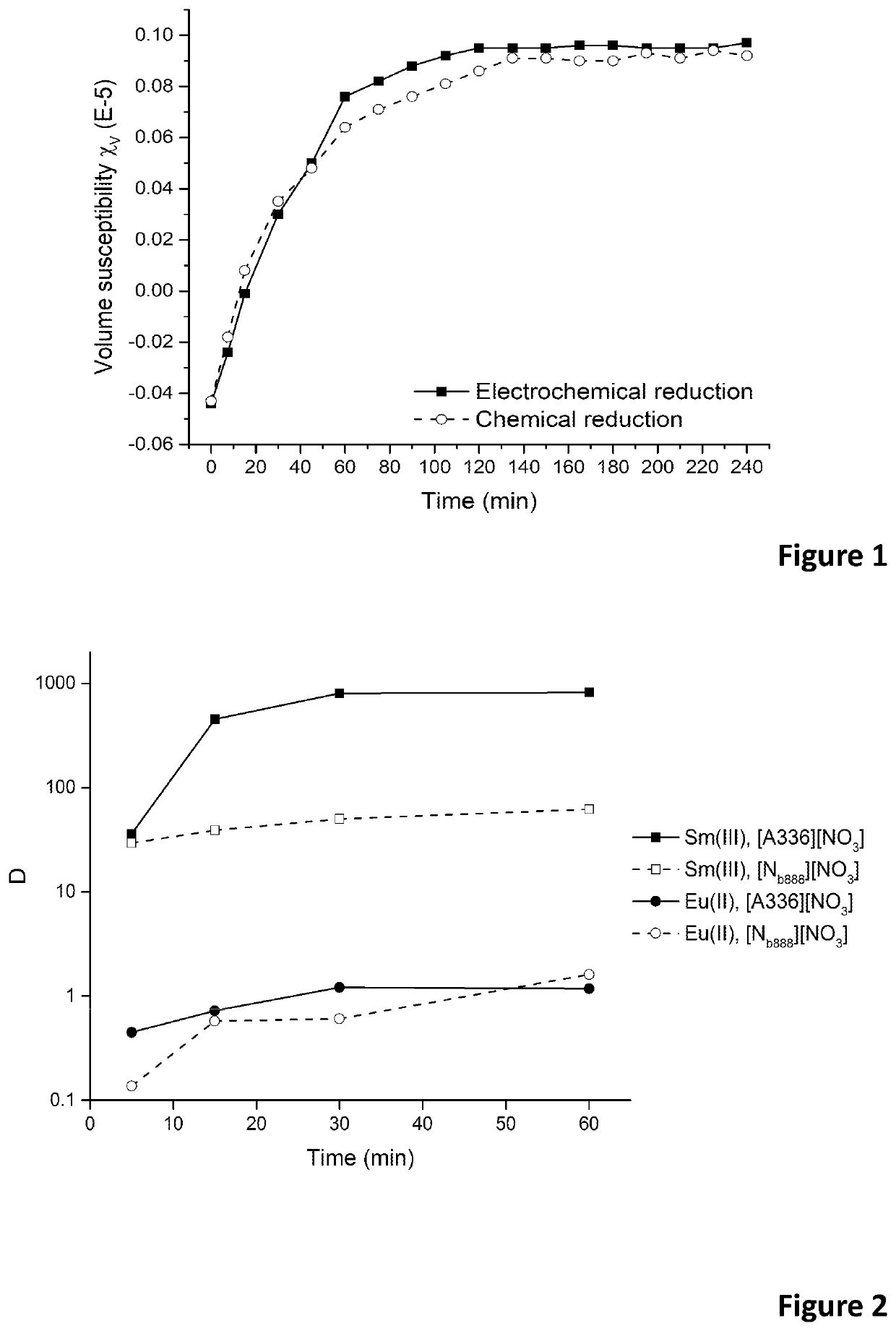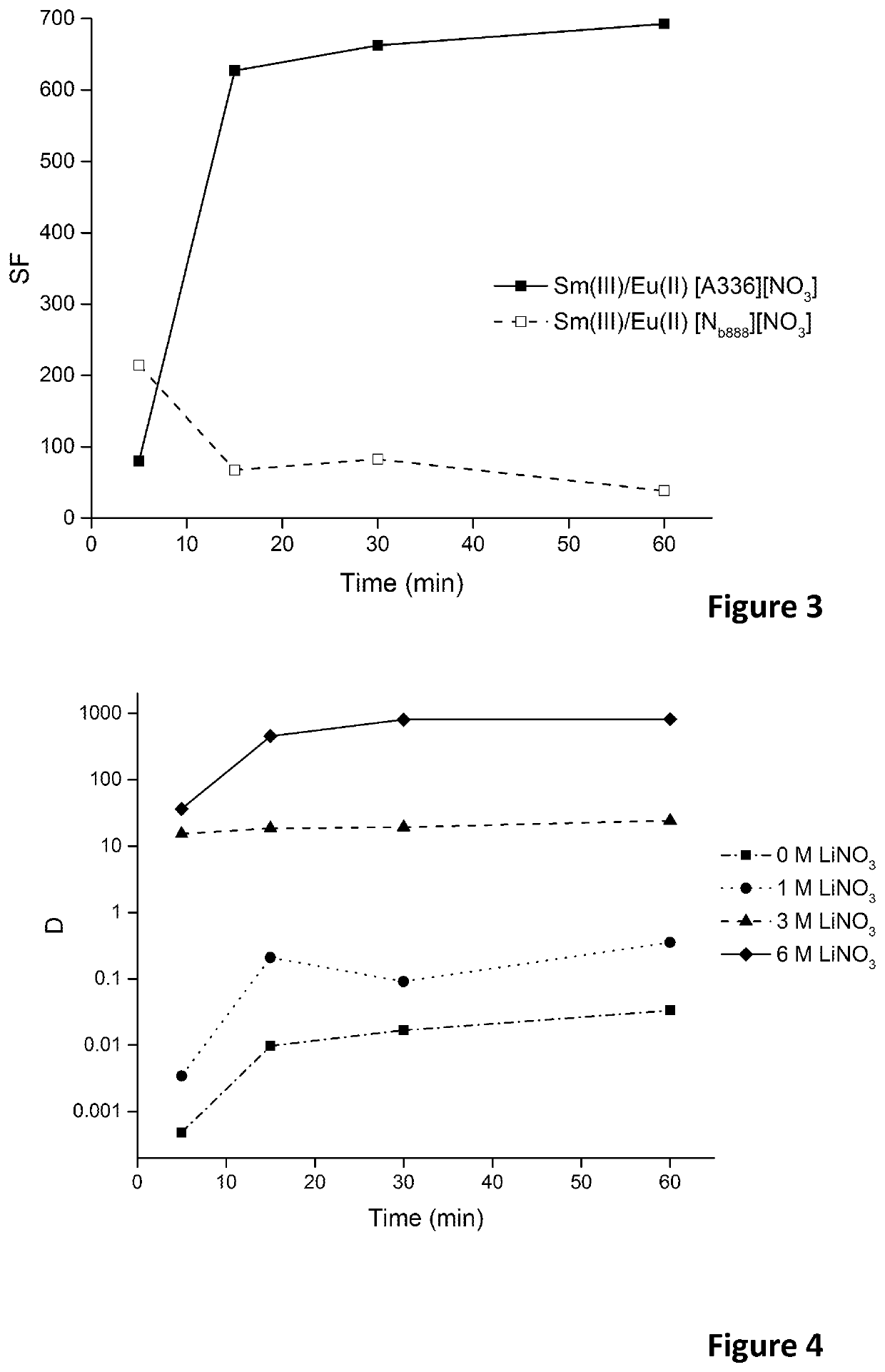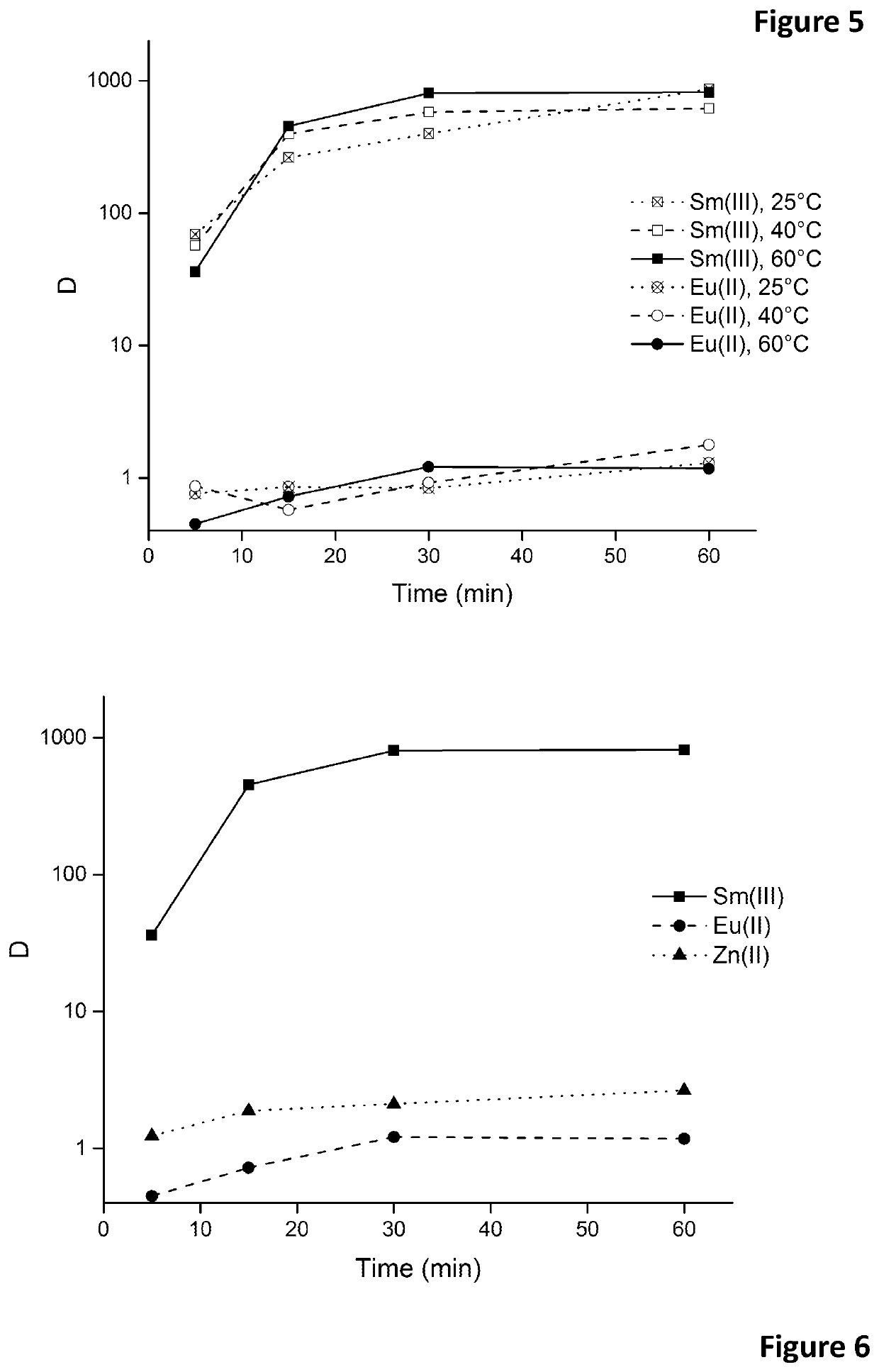Removal of europium impurities from samarium-153 in nitrate media using ionic liquids
a technology of samarium 153 and nitrate media, which is applied in the direction of rare earth metal nitrates, amphoteric ion exchangers, lanthanide oxides/hydroxides, etc., can solve the problem of insufficient stability of divalent europium, and achieve high ionic strength, increase the total europium concentration, and use more efficiently
- Summary
- Abstract
- Description
- Claims
- Application Information
AI Technical Summary
Benefits of technology
Problems solved by technology
Method used
Image
Examples
example 1
of Ionic Liquids
[0108]Tricaprylmethylammonium nitrate was prepared from the corresponding chloride ionic liquid by pre-equilibrating the chloride ionic liquid multiple times with a concentrated NH4NO3 solution to exchange the chloride ions for the nitrate ions. This resulted in water-saturated nitrate ionic liquids. Benzyltrioctylammonium nitrate was prepared by means of the quaternisation of trioctylamine by benzyl bromide while refluxing in acetonitrile for 8 h, resulting in the ionic liquid benzyltrioctylammonium bromide. The bromide anions where exchanged by nitrate anions by contacting the bromide ionic liquid with a concentrated NH4NO3 solution.
example 2
Reduction of Europium(III) by Zinc(0)
[0109]Europium(III) was reduced to europium(II) by contacting the aqueous feed solution with an excess of zinc metal grains (20 mesh) for over 2 h to assure high reduction rates. The pH of the solution was kept sufficiently high (4.5≤pH≤7) to prevent oxidation of europium(II) by H+. Moreover, the feed solution was purged by an inert gas (Ar or N2) during the reduction in order to remove dissolved oxygen from the solution. It was observed that europium(II) is stable in aqueous media containing high nitrate salt concentrations. High nitrate concentrations (≥3 M) are needed to form stable europium(II)-nitrato complexes. Higher nitrate salt concentrations resulted in a higher stability. The formation of these europium(II)-nitrato complexes results in a change of colour of the solution, depending on the total europium concentration in the solution. The solution turns pale yellow, bright yellow or orange in case europium concentrations of 0.1, 1.0 or 1...
example 3
emical Reduction of Europium(III) Using a Potentiostat
[0110]Europium(III) was reduced to europium(II) in an electrochemical cell making use of a reticulated vitreous carbon (RVC) work electrode (WE) and a platinum (Pt) wire counter electrode (CE). A potential of −0.7 V versus a Ag / AgCl reference electrode (RE) was applied for the electrochemical reduction. The solution was purged by an inert gas (Ar or N2) during the reduction to remove dissolved oxygen from the solution. The reduction was performed in a solution containing 10 g / L europium and 3 M Ca(NO3)2. The high nitrate salt concentration is needed to form stable europium(II)-nitrato complexes. The formation of these europium(II)-nitrato complexes resulted in a change of colour of the solution from colourless to orange. The change in effective magnetic moment after reduction of europium(III), measured by means of a magnetic susceptibility balance, clearly showed the existence of europium(II) and its stability over time.
PUM
| Property | Measurement | Unit |
|---|---|---|
| Molar density | aaaaa | aaaaa |
| Molar density | aaaaa | aaaaa |
| Acidity | aaaaa | aaaaa |
Abstract
Description
Claims
Application Information
 Login to View More
Login to View More - R&D
- Intellectual Property
- Life Sciences
- Materials
- Tech Scout
- Unparalleled Data Quality
- Higher Quality Content
- 60% Fewer Hallucinations
Browse by: Latest US Patents, China's latest patents, Technical Efficacy Thesaurus, Application Domain, Technology Topic, Popular Technical Reports.
© 2025 PatSnap. All rights reserved.Legal|Privacy policy|Modern Slavery Act Transparency Statement|Sitemap|About US| Contact US: help@patsnap.com



